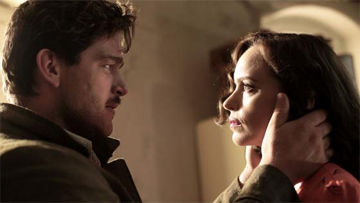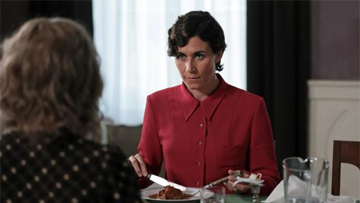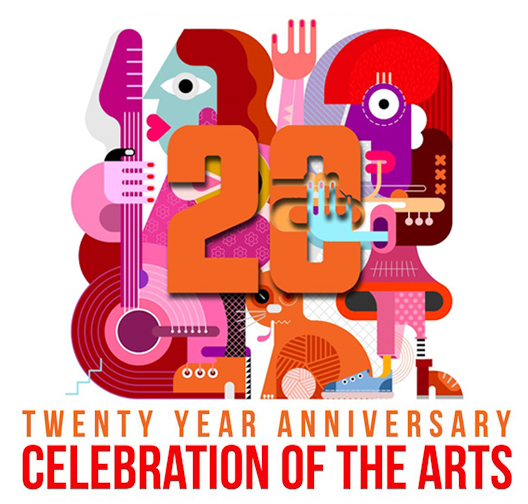
(from left): Ronald Zehrfeld, Nina Hoss.
When asked why he nixed two pages of dialogue between Harrison Ford and Kelly McGillis at the end of Witness, director Peter Weir told an interviewer, “I cut the two pages and said, 'If I've done my job, they should be able to just look at each other.'” That no frills paring down, a risky tactic that could blow up in a filmmaker's face, can sink an entire movie, but if it's executed just right, it could also transform a strong film into an exceptional one.
“Transform” is most certainly the operative word in Phoenix, Christian Petzold's absorbing, quietly devastating post-World War II drama. What begins as a solid, albeit commonplace, tale of German Jews adapting to civilian life after surviving the camps gradually becomes something more universal and resonant. Truth be told, as the film began, I feared I was in for a tough slog. The year is 1945. In the dead of night, Holocaust survivor Lene Winter (Nina Kunzendorf) drives her friend Nelly Lenz (Nina Hoss) to a Swiss hospital. Her head covered in bloody bandages, her eyes widened as in a perennial gasp, Nelly is in dire need of reconstructive surgery. Was it shrapnel or a Nazi soldier's bullet that disfigured her face? Petzold keeps such details vague, the better to make the viewer experience Nelly's disoriented state first hand.

(from left): Nina Hoss, Nina Kunzendorf.
Her surgeon's suggestion to make her appear different falls on deaf ears. Nelly, you see, left behind a husband, Johnny (Ronald Zehrfeld), when she was captured during the war, and she wants to look as close as possible as she did before her injury, ostensibly so he can recognize her when they reunite back in Berlin. Lene, looking like a Teutonic Minnie Driver, frowns on the idea, suggesting she suspects something about Johnny that Nelly doesn't.
Nelly goes under the knife, and like her doctor warned, she ends up with a new face that evokes her old one without quite matching it. The two women return to a city in ruins, and Petzold slowly begins to fill in the blanks. Nelly, as it turns out, is able to stay at a nice flat while she figures out what to do next because, in the Weimar days, she used to be a popular singer. (How popular is a question the film eventually teases out.) Lene, whose devotion to the lovelorn chanteuse hints at an unrequited yearning, suggests they move to what will become Israel and claim their plot of land, advice she doles out while wearing an assortment of bright colored blouses that exude Joan Crawford circa Calamity-Jane vibes.
Ah, but the heart wants what the heart wants, and Nelly goes out into Berlin's dangerous nightlife to find her beloved. Her quest leads her to the film's titular bar … and straight into her past. Or is it her future? Will Johnny recognize her? Will she reveal her identity if he doesn't? Petzold answers these questions clearly enough. What (wisely) remains more ambiguous is what happens after, and from this point on, it's best to experience Phoenix knowing as little as possible.

RIGHT: Nina Kunzendorf, Nina Hoss.
The film reunites Hoss with Zehrfeld they played fellow physicians in a small town circa 1980 in Petzold's Barbara and their chemistry is at once effortless and tentative, ideal for their characters' delicate pas de deux in Phoenix. Hoss, looking like the lovechild of Barbara Hershey and Frances McDormand, delivers sterling, nuanced work here, conveying the heartache of someone who loves unconditionally, regardless of how the object of her affection may have acted toward her. And Zehrfeld is an understated marvel, registering subtle changes in his face that keep viewers on their toes as to where he stands. If Nelly, Lene and Johnny have forbears in German cinema, you might be thinking of the films of Rainer Werner Fassbinder in general and The Marriage of Maria Braun (1979) in particular. That film chronicled the travails of a woman who thought she'd lost her husband during World War II, only to discover she had been misinformed. Even though it extends across a longer period of time than Phoenix does, both movies explore the ways wartime can turn loved ones into strangers.
As in Barbara, Petzold establishes a strong sense of time and place, from the seedy, dimly lit confines of the Phoenix cabaret to the ticking of the clock in Lene's bedroom. He brings postwar Berlin to vivid life without calling attention to period trappings. Street view shots from Johnny's dilapidated apartment, for instance, allow viewers to inhabit these lives with an admirable economy of storytelling.

LEFT: (from left): Nina Hoss, Ronald Zehrfeld, RIGHT: Nina Hoss.
But if the mise en scene in Phoenix is occasionally spartan, its dramatic payoff is anything but. The film ends with a scene of such precisely modulated potency than one wonders if Petzold constructed his entire narrative to ensure his closing images delivered such a wallop. Phoenix ends, not with drawn out dialogue, but with silence. Two people say nothing, yet express a tapestry of emotions when their eyes meet. They just look at each other. And that's enough. More than enough.
Phoenix opens Aug. 14 at the Bill Cosford Cinema (cosfordcinema.com), and Aug. 7 at Cinema Paradiso Hollywood (fliff.com/Cinema_Paradiso), Miami Beach Cinematheque (mbcinema.com) and the Tower Theater (towertheatermiami.com). It opens Aug. 12 at Living Room Theaters in Boca Raton (fau.livingroomtheaters.com).




